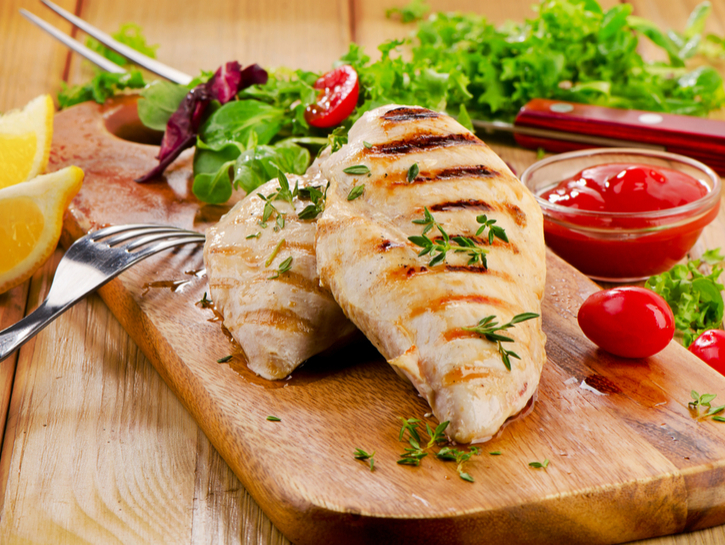Chicken is a popular protein source all over the world, with 108 million tons consumed each year. Chicken is lower in saturated fat than most red meat, such as beef, pork or lamb.
While chicken’s lower fat content is a boon to our health, it can quickly rob the meat of moisture if overcooked. On the other hand, undercooked chicken can risk lead to you getting a foodborne illness because of bacteria, such as Salmonella. Striking the proper balance results in a delicious main course. Here’s how to ensure chicken cooking success:
Choosing High-Quality Chicken

Cheaper cuts of chicken are injected with a liquid that contains water, salt and other preservatives in a practice called “plumping.”
Plumping helps preserve the chicken while making the cut a little juicier — unfortunately, the liquid cooks away if not handled properly. Choosing organic, free-range chicken is optimal, but even those brands labeled “natural” or “no water added” are better options. Chicken with the bone left in and the skin still on it is a better choice in terms of both price and flavor — bone-in chicken is generally cheaper and the skin fat renders down nicely into the chicken when cooked, providing extra flavor.
Proper Chicken Cooking Methods
Whether you are using boneless chicken or the bone-in variety, your choice of cooking method is crucial for a tender and juicy result. Boiling chicken in water tends to squeeze the juices out of the chicken, leaving it dry and rubbery. Baking chicken has been known to yield a tasty, juicy result. It is highly recommended to have a meat thermometer when cooking chicken, as poultry must reach an internal temperature of 165 degrees and using a meat thermometer will allow you to know exactly when you’ve reached that point and reduce the risk of overcooking.
Pan Sautéed Chicken

Skumer/Shutterstock
Pan sautéeing chicken allows you to sear and cook the chicken in its own juices. You’ll want to use cooking oils with a high smoking point and avoid fiddling too much with the chicken once it’s in the pan to ensure maximum flavor and juiciness.
- Pat the chicken dry with a paper towel, and then season both sides of the chicken with salt and pepper.
- Preheat a cast iron skillet over medium-high heat, and put two tablespoons of canola oil into the pan. Once the pan has reached the desired heat, place the chicken in the pan.
- As mentioned before, messing with the chicken by poking it with tongs, flipping it too often or just moving the pan around will result in a drier cut of meat. Once you place the chicken in the pan, wait five minutes and then flip once. You’ll notice the chicken has a nice golden brown color.
- Continue to cook the chicken for three more minutes after flipping, without touching it again.
- Add a tablespoon of butter to the pan to give the chicken an extra kick of flavor and juiciness.
- Let it cook for one minute and then remove the chicken to a cutting board, letting it rest for one minute.
- Cut the chicken up and serve.
If your cuts of meat are a little on the larger side, preheat your oven to 350 degrees and place your chicken inside after cooking it in the butter. This will ensure that the inside of the thicker cuts of chicken are cooked all the way through without completely drying the outside.
Grilling Chicken

amenic181/Shutterstock
With bone-in cuts, grilling is a great way to get a juicy and tender finished product. In order to get the best tasting results from grilled chicken, you’ll want to soak your cuts of meat in a brine for a couple of days. When it’s time to grill:
- Remove the breasts from the refrigerator and pat them dry with paper towel.
- When grilling, you’ll want to preheat two sides of the grill, one side being set to high heat while the other side is set to low heat.
- Add the meat, skin side down, to the higher heat side of the grill for five minutes and then rotate the chicken.
- After an additional five minutes on the skin side, flip over the to bone side. Cook bone side-down for ten minutes, then move the chicken to the low heat side of the grill, still bone side-down.
- Cover the grill and allow to grill-roast for ten minutes. Once the chicken has reached 165 degrees, take it off the grill and let it sit for one minute before squirting some lemon juice on it. After that, you’re ready to eat!
